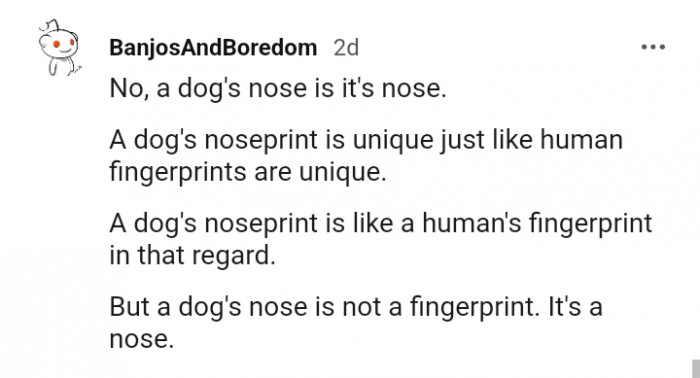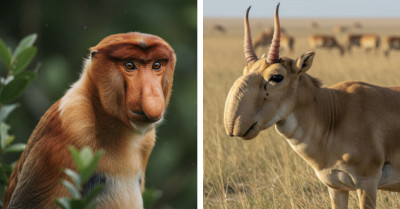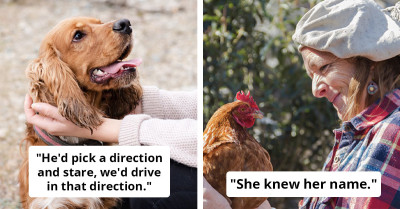Redditors Learn That Every Dog's Nose Print Is Unique and Can Be Compared to Fingerprints
Yes, your furry little companion has its own unique nose print. It has been studied to determine how distinctive the canine nose pattern is.
A total of 60 dogs of different ages, genders, and breeds were brought in, and 180 photos of their noses were collected. These photos contained the dogs' nose patterns, which were visually and biometrically analyzed.
It was discovered that the canine nose pattern is indeed specific to each dog and remains invariant regardless of when the image is taken. Additionally, the same analysis was conducted using a larger dataset of 278 nose photos from 70 dogs of 19 different breeds.
A similar conclusion was reached when studying the expanded dataset as well. The findings of this study support and strengthen earlier statements made by others that each dog has a distinct nose pattern that can be used as a biometric identifier.
Not only dogs, but other species also have distinctive nose patterns. All canids, such as dogs and wolves; bovids, such as cattle; felids, such as cats; and cervids, such as deer, have unique patterns on their noses.
A favorable result for one species is an excellent indicator that the same may be true for others due to the similarities in their biological characteristics and the origins of their nasal organs.
This very information is what this Redditor brought to the TodayILearned subreddit group, and here's the headline...

This study demonstrates how each dog has its own canine nose pattern, which is an interlocking arrangement of beads and grooves on the nose. Over three consecutive dates, each around three to four months apart, the nose photos of 60 dogs were collected.
Dogs of various ages, genders, and breeds are well represented in the dataset for this longitudinal cohort study, which was created to ensure data variety. In the study, the distinctiveness of the canine nose pattern was assessed using a biometric algorithm and ocular inspection of the nose patterns of these dogs.
It was discovered that the canine nose pattern is indeed specific to each dog and that it remains invariant over the course of the observation period.
Here is what Redditors had to say concerning the information shared by the OP

This Redditor says fingerprints are left all over the storm door.

The Uniqueness of Canine Nose Prints
The recent revelation that every dog’s nose print is as unique as human fingerprints presents fascinating implications for understanding individual differences in animals. This uniqueness may reflect the broad spectrum of personality traits observed in dogs, such as temperament and behavior. Research from the University of Pennsylvania indicates that, just like humans, dogs exhibit distinct personality profiles shaped by both genetics and early experiences.
Studies have shown that a dog's environment, training, and social interactions significantly influence their behavioral tendencies. This highlights the relationship between biological markers, like nose prints, and behavioral outcomes, providing a deeper understanding of canine individuality.
The Unique Biology of Dog Nose Prints
Dr. Timothy Foster, a behavioral biologist at UC Berkeley, highlights that the uniqueness of a dog's nose print is not just a quirky fact but is rooted in evolutionary biology.
This uniqueness serves as a biological marker that could have implications for understanding canine behavior and identity.
Research suggests that just as human fingerprints are used for identification, these nose prints could enhance our ability to track and understand canine populations in various environments.
The nose definitely knows.

This comment is kind of funny.

Your dog was running a Ponzi scheme?

Moreover, the uniqueness of nose prints can be linked to the concept of identification and belonging in social contexts. Dogs are known to form strong attachments with their owners, reflecting theories in attachment psychology. According to studies published in the Journal of Personality and Social Psychology, secure attachment in pets can lead to better behavioral outcomes and a more profound emotional bond with their owners.
This bond is essential for effective training and socialization, suggesting that understanding each dog's unique traits can enhance the human-animal relationship.
Interestingly, studies in animal behavior show that dogs utilize their sense of smell to communicate and understand their surroundings, linking their olfactory capabilities to their social interactions.
According to research published in the Journal of Comparative Psychology, dogs have a remarkable capacity to discern scents, which may explain why nose prints are unique.
This ability not only aids in identification but also plays a crucial role in their social structures and relationships with humans.
A dog's nose is not a fingerprint but a nose.

It is really cute when you think about it.

Really?

Implications for Dog Training and Behavior
Understanding that every dog possesses a unique nose print can also inform behavior modification strategies. Experts in canine behavior emphasize the importance of recognizing individual differences when addressing behavioral issues. Tailoring training methods to suit a dog’s specific personality traits can significantly improve outcomes.
For instance, positive reinforcement strategies can be more effective for dogs with high sociability, while more structured approaches might be necessary for those showing signs of anxiety. Research indicates that customizing training approaches based on personality can lead to more effective behavioral changes, ultimately enhancing the dog's well-being.
The Social Implications of Unique Identifiers
From a psychological perspective, understanding the uniqueness of dog nose prints can help pet owners develop stronger, more individualized bonds with their dogs.
Research in human-animal interaction has shown that recognizing unique traits fosters a deeper connection and enhances emotional well-being for both the pet and the owner.
This unique aspect of dogs can also promote responsible pet ownership, encouraging owners to appreciate and understand their pets on a more personal level.
Lol... Well, not literally... Or literally.

That's another angle to look at it from.

This study demonstrates how each dog has its own canine nose pattern, which is an interlocking arrangement of beads and grooves on the nose. The research supports and strengthens other studies' statements that each dog has a distinct nose pattern that can be used as a biometric identifier.
Are you happy to know about this information? Leave your thoughts in the comments and share as well.
Additionally, the concept of uniqueness in animals extends to the psychological realm, where individuality can significantly impact behavior.
A study from Harvard University highlights that recognizing individual differences in animals can lead to better training methods and improve animal welfare practices.
By valuing these differences, owners can tailor their approaches to each pet's specific needs, ultimately fostering a healthier and more harmonious relationship.
Analysis & Alternative Approaches
Overall, the uniqueness of dog nose prints opens up fascinating avenues for understanding canine behavior and strengthening the bond between dogs and their owners.
Research supports that individual attention to pets can enhance emotional connections, leading to healthier relationships.
As we learn more about the biology behind these unique identifiers, we can apply this knowledge to improve our interactions with our canine companions.
Additionally, this discovery has potential applications in veterinary science, particularly in identifying and understanding health issues. Just as unique fingerprints can aid in human identification, nose prints could serve similar purposes in veterinary medicine, helping to track health histories and diagnose conditions more accurately. Studies published in veterinary journals show that early identification of health issues can lead to more effective treatment plans.
This connection between unique biological markers and overall health emphasizes the need for a comprehensive approach in treating our canine companions, further bridging the gap between their physical and behavioral health.
Psychological Analysis
This finding underscores the importance of individual differences in animal behavior. Every dog's unique nose print not only identifies them but can also reflect their personality and behavioral traits, which are crucial for effective training and care.
Analysis generated by AI
Analysis & Alternative Approaches
In summary, the uniqueness of a dog's nose print is more than a fascinating fact; it opens avenues for understanding canine individuality, enhancing human-animal relationships, and improving health care for dogs. According to research from the American Veterinary Medical Association, recognizing these unique traits can lead to better care practices and foster stronger bonds between pets and their owners.



